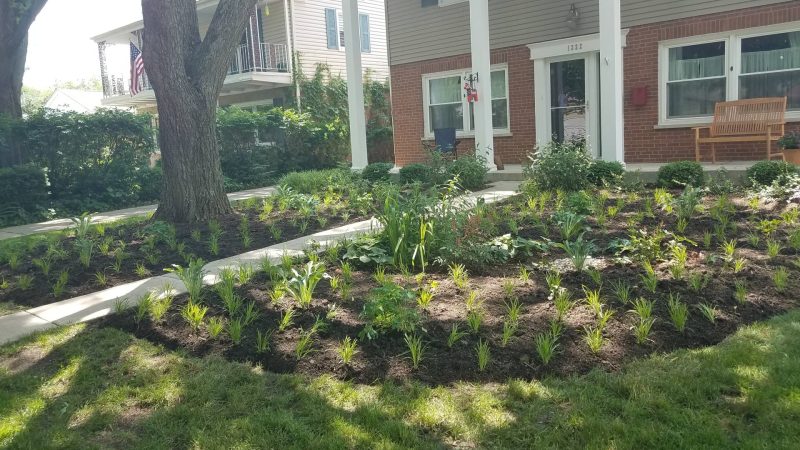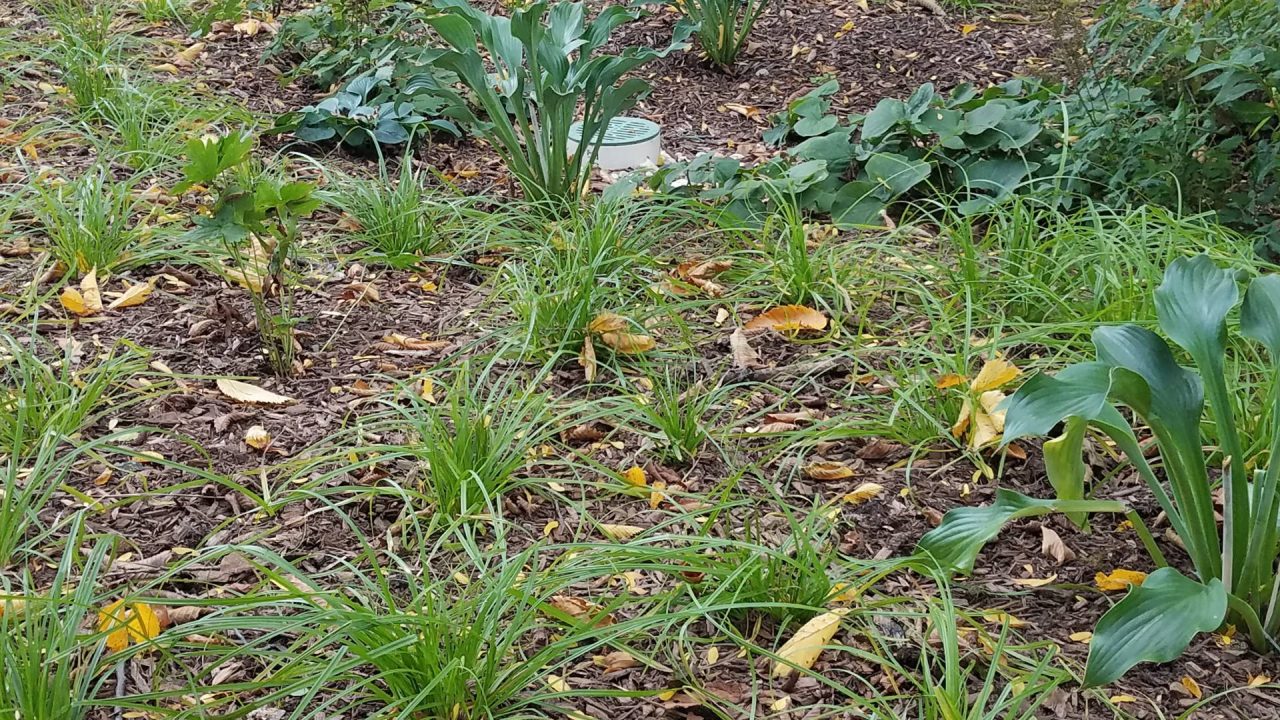The Versatility of Carex
By Carol Becker
Last season, I planted a Carex garden under the mature pin oak in my own front yard. Using plugs of Carex sprengelii planted roughly 18-24 inches on center, leaving some open spaces where I interspersed native plants that love shade: Geranuim maculatum, Aquilegia canadensis, Uvularia grandiflora, and Gillenia trifoliata.
I’ve used this design to address the difficulties of deeply-shaded areas (especially under maple and other trees) in my client gardens, and I’ve found it works beautifully to create a stunning and unique garden of native plants that standup to the shade and provide continuous color as the flowering plants bloom one after the other throughout the season.
The secret of this design application is the Carex, and C. sprengelii is only one option. I like it for its strong culms (the botanically correct name for stems), and its unique and attractive inflorescence that includes both male and female spikelets “flowering” in the late spring. The whole garden then comes together and stands apart from the surrounding lawn since this particular Carex grows up to 2 feet tall, and the interspersed blooming natives add constantly changing interest.

Carex is the genus name for the sedges – and there are many! I’ve seen estimates of 600 up to over 1,000. They look so much like grasses that they are often confused. Anatomically they differ from grasses in that their culms are triangular and solid, while grasses have hollow culms with swollen joints called nodes. I found on the New York Botanic Garden website a fun mnemonic that helps me remember the differences among grasses, sedges, and rushes. It goes like this: “Sedges have edges; Rushes are round; Grasses have nodes from the top to the ground.” The botany aside, Carex is significant for us because of its versatility. Unlike ornamental grasses, many Carex are shade loving. While they are still most often thought of as wetland plants for restoration or naturalization projects, their traits are much more diverse.
Sedges in woodlands especially are a source of food to various insects, including the larvae of a butterfly, Satyrodes appalachia (Appalachian Brown), larvae of several leaf-mining moths (Elachista spp.), larvae of Cosmopterix clemensella (Clemen’s Cosmopterix Moth), stink bugs, and miscellaneous aphids, says the Illinois Wildflowers website. The seeds of sedges in woodlands are eaten by Bobwhite Quail, Wild Turkey, immature Ruffed Grouse, Eastern Towhee, and various sparrows. Sedges in abundance, as when planted in a mass design or when spreading naturally in the wild, also provide cover for small rodents, ground-nesting woodland birds, and other wildlife.
I have found Carex to be a wonderful resource for a wide range of design applications. Some can be used in rain gardens and bioswales. Others tolerate drier conditions and do well in sunny butterfly garden sites or even in one of the toughest garden areas – under dense shade trees as I have described above
In my own trials with Carex I’ve noted and taken advantage of the different ways Carex grows depending on the look I’m trying to achieve. While C. sprengelii stands quite upright because of its long and graceful culm, others like C. rosea have delicate culms that form a soft carpet of clumps if planted as a groundcover or mulch replacement. C. pennsylvanica and C. appalachica are popular Carex for lawn replacement applications. C. appalachica works very well for this purpose as it does not dry out and get brown in midsummer’s dry conditions. The plants also maintain their attractive clumping form. It’s very delicate culms that grow up to 12” form a lovely drifting, soft-looking carpet with starry seedheads that all add up to a great deer-resistant lawn replacement in sun or shade. It is also host to the skipper moth caterpillar. In this type of application, mowing once in the spring will refresh the growth each season. What can be better?

Before we close, here’s a design challenge using Carex radiata, commonly called Star Sedge. It is shade-tolerant, moisture tolerant, and attractive to wildlife. Its native habitat is moist, organically rich woodland, in lightly shaded areas and it is often found in nature in degraded woodland. Like most other Carex, its seeds are eaten by many songbirds and gamebirds that prefer wooded habitats. Where could you use this sedge in your garden?
Back To Blog
